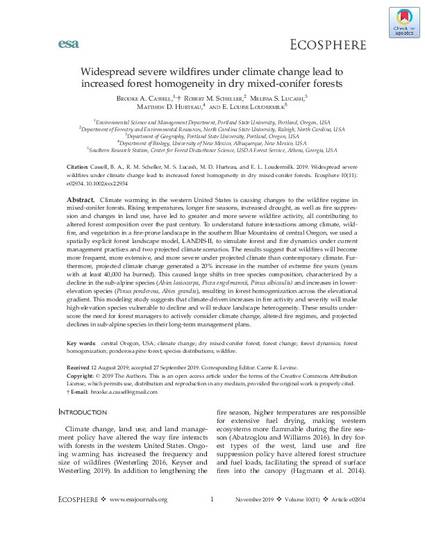
- Forests -- Climatic factors,
- Climatic changes
Climate warming in the western United States is causing changes to the wildfire regime in mixed-conifer forests. Rising temperatures, longer fire seasons, increased drought, as well as fire suppression and changes in land use, have led to greater and more severe wildfire activity, all contributing to altered forest composition over the past century. To understand future interactions among climate, wildfire, and vegetation in a fire-prone landscape in the southern Blue Mountains of central Oregon, we used a spatially explicit forest landscape model, LANDIS-II, to simulate forest and fire dynamics under current management practices and two projected climate scenarios. The results suggest that wildfires will become more frequent, more extensive, and more severe under projected climate than contemporary climate. Furthermore, projected climate change generated a 20% increase in the number of extreme fire years (years with at least 40,000 ha burned). This caused large shifts in tree species composition, characterized by a decline in the sub-alpine species (Abies lasiocarpa, Picea engelmannii, Pinus albicaulis) and increases in lowerelevation species (Pinus ponderosa, Abies grandis), resulting in forest homogenization across the elevational gradient. This modeling study suggests that climate-driven increases in fire activity and severity will make high-elevation species vulnerable to decline and will reduce landscape heterogeneity. These results underscore the need for forest managers to actively consider climate change, altered fire regimes, and projected declines in sub-alpine species in their long-term management plans.
© 2019 The Authors.
This is an open access article under the terms of the Creative Commons Attribution License, which permits use, distribution and reproduction in any medium, provided the original work is properly cited.
